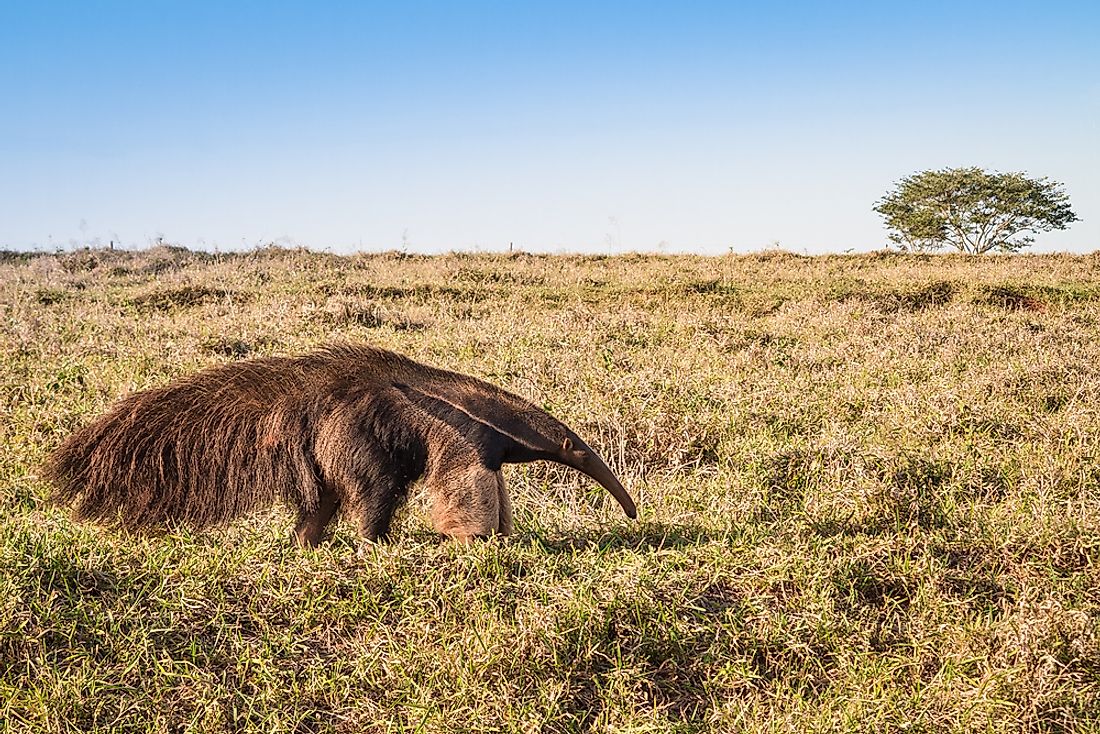Threatened Mammals of Uruguay

A number of factors have contributed to the declining number of mammals native to South America, especially Uruguay. The decline has been so sharp that some of the animals have been predicted to become extinct in the next few decades. Factors that threaten their status are mostly human activities that can be avoided. Some of the threatened native mammals of Uruguay and the conservation measures are discussed below.
Threatened Mammals
Southern Long-Nosed Armadillo- Dasypus hybridus
The Southern long-nosed armadillo measures approximately 30 cm, and has a 17 cm long tail. Both males and females weigh approximately 2 kg. The upper body and the tail are covered with a bony scales and little hair. The animals live naturally in almost the whole of Uruguay. They prefer living in quiet places with minimal disturbances. Destruction of their natural habitats has resulted to this species being listed as nearly threatened. Clearance of their natural habitat for settlement and agriculture has resulted to their increased decline. Besides, they are often hunted and predated. Dogs are among the key predators of Southern nosed-armadillo. Hunting them has resulted to their high population decrease.
Giant Armadillo- Priodontes maximus
The giant armadillo is dark brown in color and has 80-100 teeth.They have extremely long front claws. The third claw is crescent-shaped. Their tails are covered with round scales. The body has few hairs, with most of the hair growing between its scutes. The giant armadillo weighs between 17 to 33 kg on average and mostly feed on termites. They are hunted for their meat. Furthermore, they are also a popular trade good in some parts of South America. Habitat loss due to deforestation has led to the animals’ status being declared as vulnerable in the World Conservation Union Red List.
Giant Anteater- Myrmecophaga tridactyla
The giant anteaters are large, with long extended muzzles and a long bushy tail. It mostly feeds on ants and termites. The sticky tongue comes in handy whenever they are hunting for food.It weigh between 27 and 40 kgs. The giant anteater mostly prefer to live in grasslands and rainforests.The IUCN has listed IT as vulnerable. The key factors that lead to the decline in the population of the giant anteater are poaching, habitat destruction especially by forest fires, and predation. The animals are mostly hunted for their fur and for their bushmeat.
Giant Otter- Pteronura brasiliensis
Giant otters are carnivores. They exhibit some of the characteristics that are considered to be those of the amphibian animals. Some of the amphibian characteristics they exhibit include webbed-feet and long, wide tail. They prefer living around fresh-water bodies. The animal has been listed as endangered. Poaching and habitat destruction are the main factors that have led to their rapid population decline. Poachers target the animals to acquire its velvety pelt. Its poaching was at its peak in the 1950s and 1960s.
Conservation Measures
Uruguay has been effortlessly taking the initiative of protecting the threatened mammals. Parks have been established to serve as the habitats of these threatened mammals. The parks help reduce human interaction with the animals, which in turn reduces hunting. Several regulations have been put in place to protect the animals from hunting such as fines and jail terms. The country has also abolished the use of the threatened animals as merchandise in the markets.
Threatened Mammals of Uruguay
| Rank | Threatened Mammals of Uruguay | Scientific Name | Classification |
|---|---|---|---|
| 1 | Southern long-nosed armadillo | Dasypus hybridus | Near threatened |
| 2 | Giant armadillo | Priodontes maximus | Vulnerable |
| 3 | Giant anteater | Myrmecophaga tridactyla | Vulnerable |
| 4 | Strange big-eared brown bat | Histiotus alienus | Vulnerable |
| 5 | Sei whale | Balaenoptera borealis | Endangered |
| 6 | Fin whale | Balaenoptera physalus | Endangered |
| 7 | Blue whale | Balaenoptera musculus | Endangered |
| 8 | Sperm whale | Physeter macrocephalus | Vulnerable |
| 9 | Colocolo | Leopardus colocolo | Near threatened |
| 10 | Geoffroy's cat | Leopardus geoffroyi | Near threatened |
| 11 | Maned wolf | Chrysocyon brachyurus | Near threatened |
| 12 | Giant otter | Pteronura brasiliensis | Endangered |
| 13 | White-lipped peccary | Tayassu pecari | Near threatened |
| 14 | Pampas deer | Ozotoceros bezoarticus | Near threatened |











